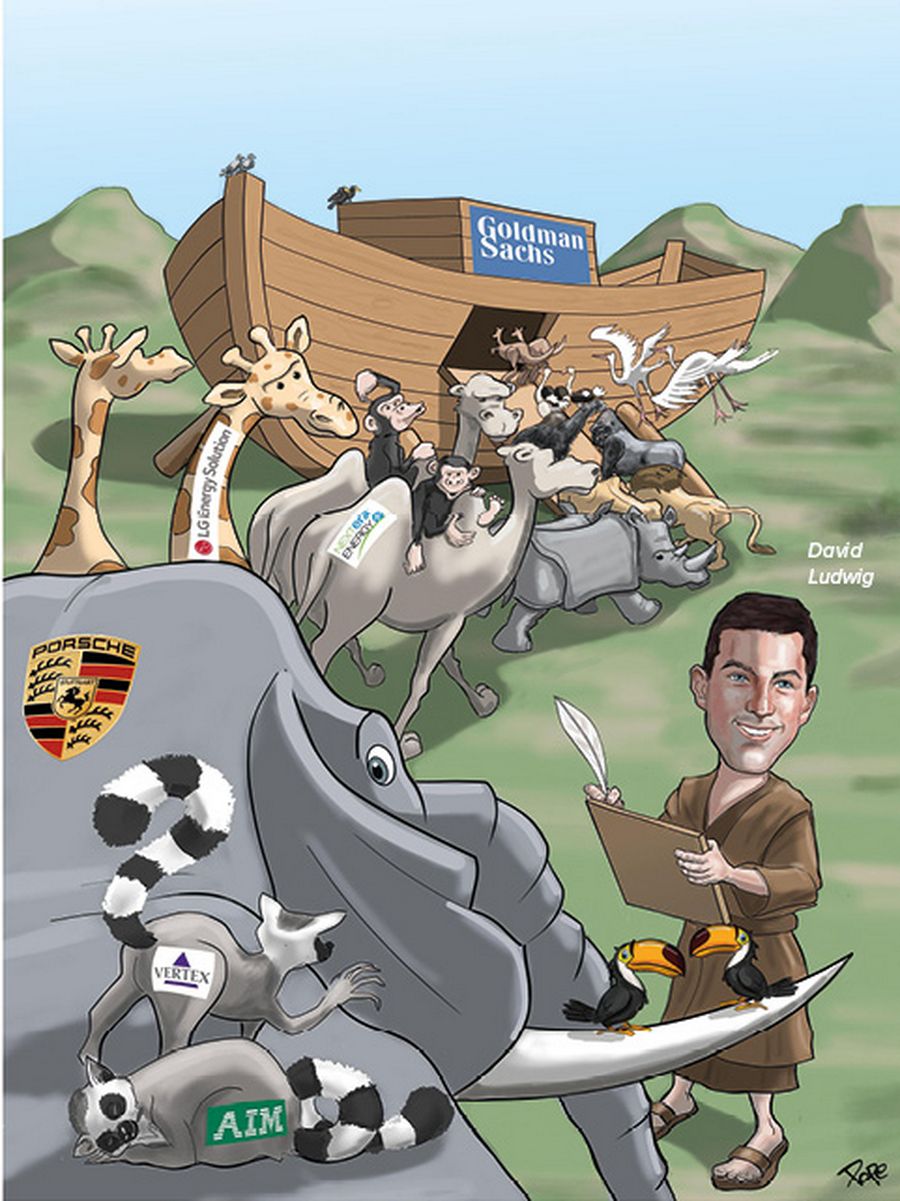Big and small in the ark
As issuance collapsed in 2022, many banks struggled to remain relevant across the globe, but not Goldman Sachs. It drove the biggest deals and some of the smallest, leveraging its expertise to deliver transactions that worked in difficult times. For the third consecutive year, Goldman Sachs is IFR’s Equity House of the Year.

The post-Covid lockdown sugar rush that fuelled IPO issuance in 2021 couldn’t last forever, and the comedown was brutal. Issuance fell to a 19-year low and by year-end many equity capital market bankers had lost their jobs.
Goldman Sachs regularly sits atop the ECM league tables globally and in the regions so had more to lose than most. Its three-year spell at the top of global ECM tables was broken by Citic as China represented 38% of global ECM volume and four Chinese banks made the top 10 globally.
Goldman took every job it could find – big, small, even junior roles – to keep the machine going and the league table credit ticking up. But that included some impressive highlights, as the lead on Porsche’s €9.08bn IPO – EMEA IPO of the Year – and lead-left on software company Mobileye Global’s US$990m Nasdaq IPO – North America IPO of the Year.
IFR has 11 ECM deal awards globally, including equity-linked, and Goldman worked on nine with top line roles on seven.
“What defines our global franchise is our diversity,” said David Ludwig, the bank's global head of ECM. “We consistently have leading positions across geographic regions, industry verticals and the various capital markets products, which allows us to serve a broader set of clients more holistically.”
Risk on, risk off
At no point in the year were deals easy and yet Goldman still showed glimpses of its typical swagger.
It won an auction among banks for the US$1bn capital increase by cruise ship operator Carnival in July, the largest capital-committed stock sale in nearly nine months. The surprise 10% capital increase was completed in a few hours at a 10% discount. Stifel analysts said the unexpected trade would “cause concern (actually let’s call it panic) across the investment community” and shares dropped sharply the following day to below the issue price, but Goldman had secured the funds needed to help tackle Carnival’s massive debt burden.
Goldman had already shown its appetite for block risk in March when it won another auction, alongside Jefferies, as Qatar Holdings shed 1.2% of Glencore. The £789m sale was unexpected but it is a liquid name with known interest among investors and was covered inside an hour.
At other times the bank was happy for others to take the bulk of the risk, with Goldman taking just 1.2% of the underwriting on Credit Suisse’s SFr2.24bn (US$2.4bn) rights issue, a canny move that saw it take on less than a tenth of the risk of the top line banks but get equal league table credit.
Second to one
In the US, Goldman had to settle for second place in the league table behind JP Morgan but still had a prominent role in nearly all the year’s big IPOs and follow-ons.
October’s US$990m IPO of self-driving software firm Mobileye was the first US IPO to price above the range since December 2021 and the biggest tech IPO of the year.
Goldman also played a leading role on all of 2022’s other big US IPOs, including January’s US$1.1bn Nasdaq offering by private equity firm TPG, May’s US$712m NYSE listing of eyecare brand Bausch + Lomb and (lower down the pecking order) September’s US$1.7bn NYSE debut of life insurer Corebridge Financial.
Goldman was lead-left and stabilisation manager on August’s US$863m follow-on for neuroscience-focused biotech Karuna Therapeutics, the largest healthcare follow-on of the year. It played the same dual roles for a US$750m follow-on from online real estate platform CoStar in September, marking the first follow-on tied to index inclusion in the past five years as the stock joined the S&P 500.
The firm was again lead-left and stabilisation agent for ECM regular Annaly Capital Management when the mortgage REIT raised US$1.5bn from two blocks in the space of three months (raising US$742m in May and US$765m in August).
Goldman also accommodated clients who wanted to minimise market risk, acting as lead bookrunner for Canadian uranium miner Cameco’s US$748m block sale of equity to help fund its US$7.9bn joint purchase of Westinghouse Electric announced at the same time.
“Execution strategy was at a premium given the volatile markets throughout 2022, and the strength of our distribution capabilities was highlighted by the fact that we were the lead-left bookrunner on almost 50% more volume than our nearest competitor,” said Ludwig.
Less obvious (and less transparent) to the outside world is Goldman’s leading position in private placements, an important sideline while public markets were out of bounds for many companies.
According to Goldman’s own numbers, the bank led the market with US$7bn of private placement deal volume from 20 transactions last year, including as sole placement agent for sports merchandise firm Fanatics’ US$1.5bn preferred equity raise in March. Such transactions often included structural nuances to bridge valuation gaps, reduce dilution and lower the cost of capital, and put these companies on a path to future IPOs.
Onshore opportunities
While offshore China ECM volume fell almost 80% year on year, Goldman now has full ownership of its China securities unit and used its domestic platform to continue to print sizeable deals for clients.
As one of two foreign banks that worked on the Rmb45bn (US$6.7bn) A-share private placement of Chinese EV battery maker Contemporary Amperex Technology, the largest ever A-share marketed follow-on and the largest follow-on globally in 2022, Goldman helped sell the deal to international investors. The offering drew unprecedented demand from foreigners, accounting for around 42% of the transaction.
“International investors are increasingly focusing on A-share markets to get allocation and exposure, because that’s the way for them to get China assets exposure with minimum geopolitical risks, which we saw in Hong Kong and US-listed Chinese stocks,” said James Wang, co-head of ECM for Asia, ex-Japan.
Goldman also brought Chinese issuers new fundraising routes when China-to-US listings were off limits amid escalating political tension between the two superpowers. The bank led the US$440m Swiss global depositary receipt offer for ChiNext-listed battery maker Sunwoda Electronic after regulators in late 2021 allowed Chinese companies to list GDRs in Switzerland and Germany in addition to London.
A US$1bn five-year put three convertible bond from ZTO Express in August highlighted Goldman’s ability to navigate through volatile markets to capture short-lived market windows.
Goldman advised the Chinese delivery company to take advantage of a very narrow market window right after its second-quarter earnings on August 18 and before the Jackson Hole symposium on August 26. The decision to come during an unconventional window was validated when a renewed period of extreme market volatility followed.
“In a year like this year, market judgement is critical. We are leading in CBs, follow-ons and block trades by a really significant margin. I think that you are only able to achieve this if you have the right read on the market, as well as credibility from investors in the market to get those deals done,” said Edward Byun, co-head of ECM for Asia, ex-Japan.
ZTO Express’s transaction, the largest international CB in Asia-Pacific in 2022, marked the reopening of the Asia ADR CB market after nine months.
Hot markets
International investors’ growing interest in local markets extended to the Middle East, with Saudi Arabia and the UAE driving issuance with a rush of IPOs that looks to be part of a permanent shift in EMEA ECM. The big five US banks are all relatively well positioned in Saudi having worked on the IPO of Aramco in 2019 but are nonetheless playing catch-up to HSBC and local players.
Goldman was on a par with its US peers with top line roles on four IPOs. The gem in its roster of deals is Americana Restaurants, the UAE-headquartered fast food chain operator that listed on both the Abu Dhabi Stock Exchange and Saudi Arabia’s Tadawul.
Americana’s US$1.8bn-equivalent IPO made it the first foreign company to list in Saudi. It attracted orders of more than US$100bn and by the end of January its shares were up 25% in the UAE and nearly 30% in Saudi.
In the rest of EMEA the bank adapted to suit the changing conditions. When Strategic Value Partners came to sell its stake in steel tube maker Vallourec it was done in two steps rather than one that would have been preferred in normal times.
Another was getting the Irish government to pause the dribble-out of AIB shares that was making slow progress, in order to conduct an accelerated bookbuild when there was an opportunity in June, and again in November.
When Ocado wished to complete a 10% capital increase, Goldman as sole global coordinator opted to complete five days of wall-crossing, rather than one or two, to ensure shareholders were lined up to buy the accelerated deal.
Goldman, alongside Barclays, brought Spanish utility Iberdrola to market in December with the first non-dilutive convertible bond in over four years. The banks had waited three weeks for conditions that would allow the deal to succeed.
Atos bought back from Goldman the call option on its outstanding bonds exchangeable into Worldline so it could sell the underlying shares and make a clean exit ahead of a company reorganisation.
It is a recurring complaint in ECM that while every equity story is unique, deals often follow the same playbook. In a difficult period, Goldman regularly offered something different.
To see the digital version of this report, please click here
To purchase printed copies or a PDF of this report, please email leonie.welss@lseg.com














